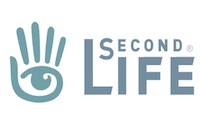Marginalized Urban Indigenous Youth and the Virtual World of Second Life: Understanding the Past and Building a Hopeful Future
 A small independent high school in the Canadian West is using the affordances of the virtual world of Second Life to explore and reconstruct the colonial past of their students: marginalized urban Indigenous youth. The affordances of the virtual world make it possible to reconstruct the past, deconstruct the present and create a possible hope-filled future. This process is underpinned by pedagogies of engagement and emancipation on three virtual islands (sims) in the virtual world. The past was reconstructed and can be deconstructed on the Negan Tapeh sim. Negan Tapeh is a Cree phrase meaning “look to the future.” When the activities and quests associated with exploring and understanding the events of the past and their impact on the present are complete, participants are transported to the virtual present on the Boyle Street sim.
A small independent high school in the Canadian West is using the affordances of the virtual world of Second Life to explore and reconstruct the colonial past of their students: marginalized urban Indigenous youth. The affordances of the virtual world make it possible to reconstruct the past, deconstruct the present and create a possible hope-filled future. This process is underpinned by pedagogies of engagement and emancipation on three virtual islands (sims) in the virtual world. The past was reconstructed and can be deconstructed on the Negan Tapeh sim. Negan Tapeh is a Cree phrase meaning “look to the future.” When the activities and quests associated with exploring and understanding the events of the past and their impact on the present are complete, participants are transported to the virtual present on the Boyle Street sim.
Boyle Street is an inner-city area in Edmonton, Alberta, where most of the youth live or gravitate to. In Canada and the United States, inner city areas have historically been synonymous with depressed and run-down parts of the city where petty crime, violence and substance abuse are woven into the fabric of daily life. On Boyle Street, the youth are tasked with completing assignments (quests or hunts) distributed by teachers (scripted agents) in the sim’s Boyle Street High School. When the three quests are completed, participants receive their key to the future. The future unfolds on the third sim Urban Hope.
This paper underlines the importance of the virtual world in educational projects with marginalized youth.
Journal for Virtual Worlds Research







